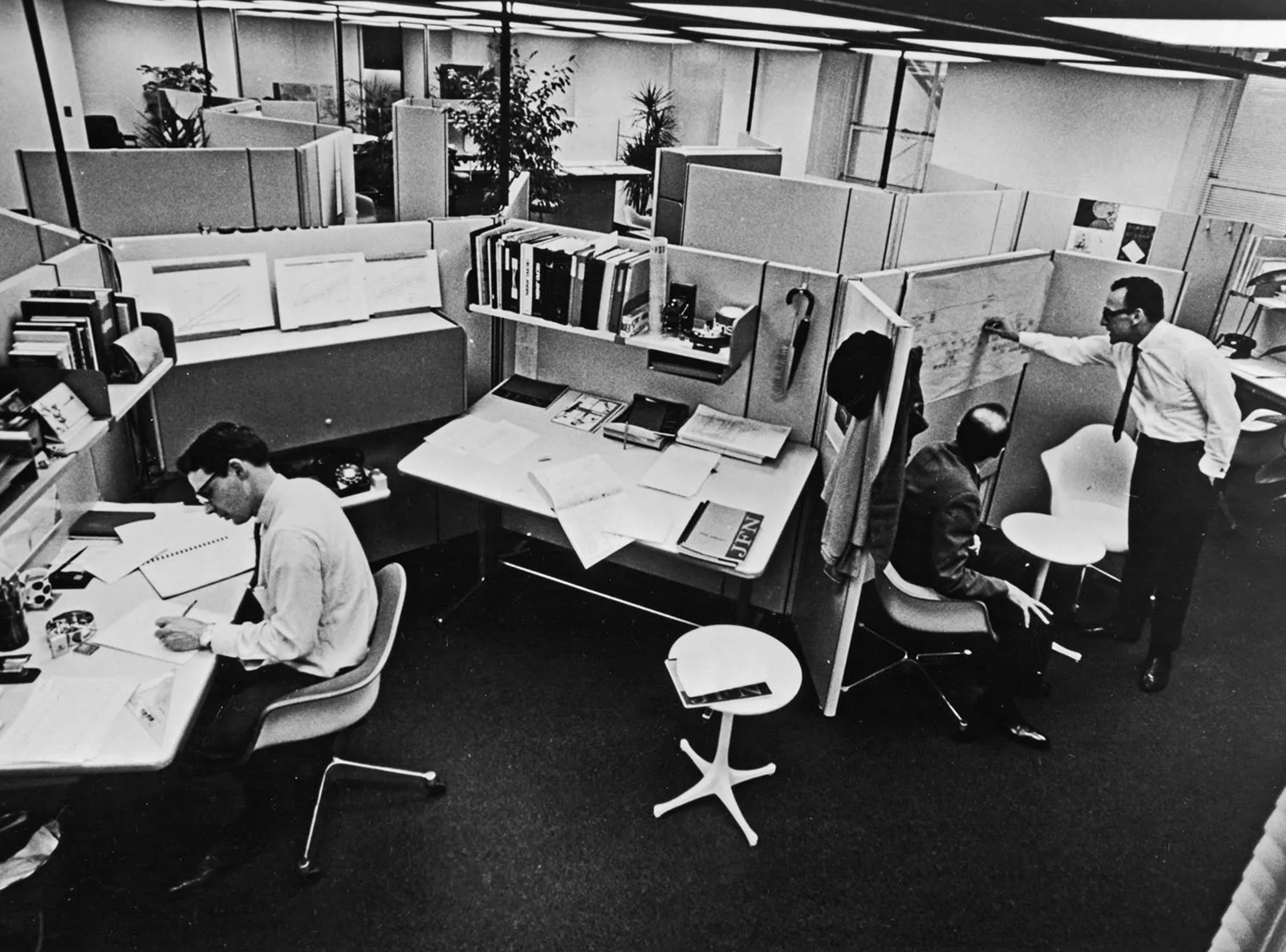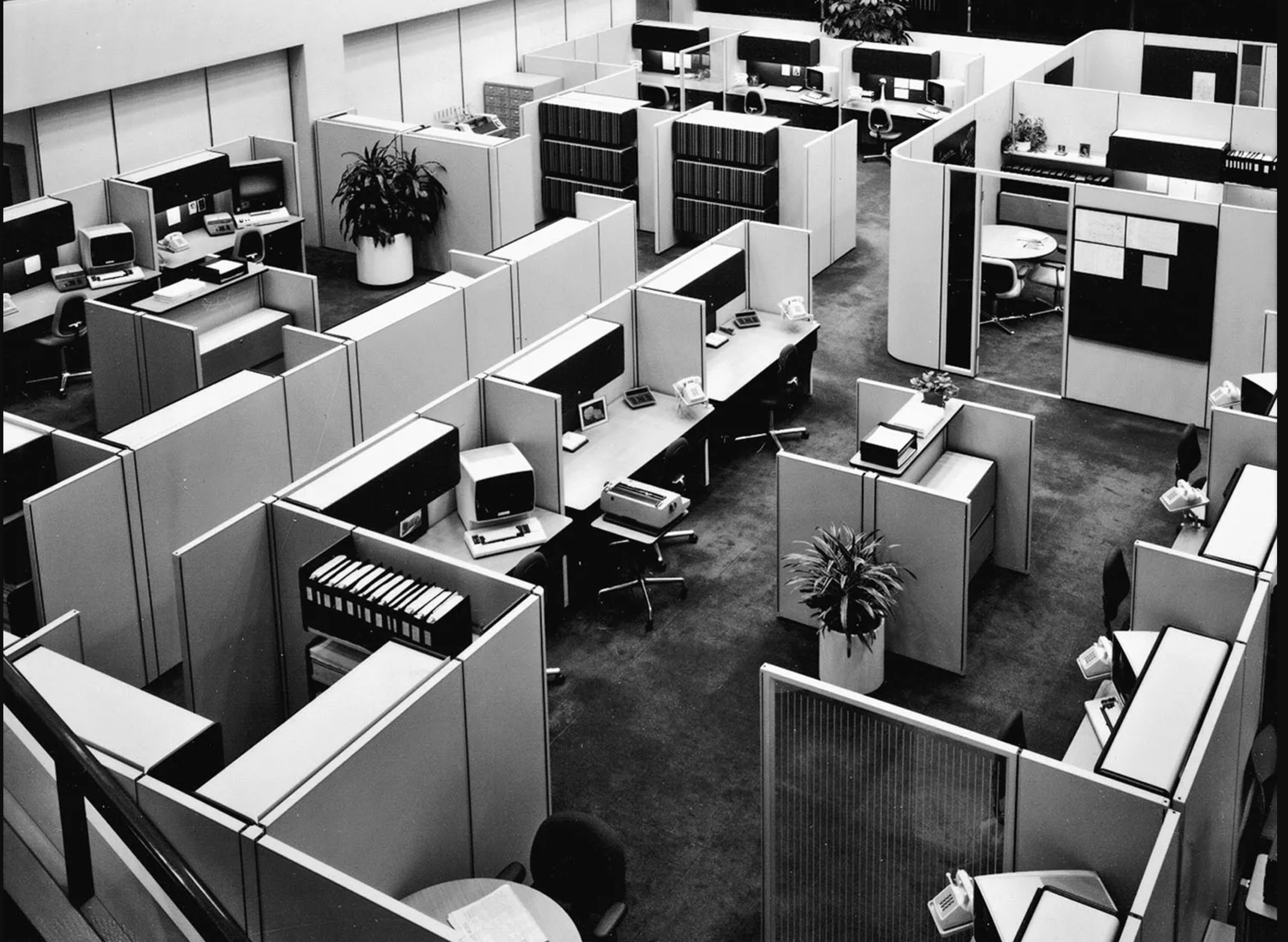How the Office Has Evolved Over Time – And Where It’s Going Next
Co-Working Space Development People Ideas. It’s self-explanatory, really.
The office has come a long way since the days of merchants working out of storefronts and storerooms. In fact, the office has undergone a number of dramatic changes in recent years – and it doesn't look like it's going to stop anytime soon.
In today's post, we'll take a look at some of the key stages in the evolution of the office – from the early modular offices of the 50s to the startup wonderlands of today. And we'll get into what's next for the office – and how it will change the real estate industry.
Let's start with a little bit of history.
The idea of a centralized "office," as we know it today, can trace its roots back to the 18th and 19th centuries, when business took place across distributed network of small merchant economies.
These localized businesses didn't have a standardized office of any kind. They worked out of storefronts and storerooms and docks and ships and perhaps at desks in their country homes. There was no such thing as a "corporate office" by today's standards – it was usually just a merchant and a clerk, maybe a lockable desk, an idiosyncratic filing system.
But then came the railroads.
With the construction of the first railroads in the late 1800s, businesses could transport goods to larger markets quickly and efficiently. This led to a wave of business consolidation, as merchants began merging into groups in order to better compete. As businesses grew larger and more complex, they needed offices for the first time – places where teams could come together to handle production, packaging, processing, paperwork, and more.
Businesses needed capital to merge and grow, and so profit-seeking investors started to play a larger role in the decision-making. A concept called "Taylorism" or "scientific management" took hold, as businesses sought to optimize efficiency by designing workflows and breaking down tasks into small, manageable, repetitive parts. This approach prioritized efficiency over human needs, a philosophy that would come to define the office for much of the 20th century.
The first "offices" were built in the image of the factories that preceded them – they were large, open spaces with rows and rows of desks, where workers toiled away at their assigned tasks, "with managers located in encircling offices where they could observe."
The typing department at the Larkin Building, 1906.
(P.S. Frank Lloyd Wright designed this space—which is a bit surprising, since he supposedly “always used nature as his guide.” Seems like nature-loving Frank could go pretty corporate when he needed to.) h/t to any diehard FLW fans—we’re probably not going to be super compatible.)
In the 1950s, a new type of office began to emerge. The modular office, sometimes called "systems furniture," consisted of prefabricated rooms with moveable walls. This type of office was designed to maximize efficiency and flexibility, and it quickly became the standard in corporate America.
Designers of these early office systems intended to help employees work comfortably and collaborate effectively. But the growing capitalist economy had other ideas: use the partitions to pack more people into less space. And so, the infamous cubicle was born.
The designers of the Herman Miller “action office” product line imagined that companies would use the flexible components to design comfortable, roomy spaces for workers to focus or collaborate. Unfortunately, they forgot how capitalism works.
Ah, there it is. The ‘action office’ system in its final form: a maze of beige, where workers could experience each other’s sneezes at close quarters.
The cubicle became the symbol of everything that was wrong with the modern workplace. In popular culture, they were cramped, soul-crushing places where workers felt like they were nothing more than cogs in a machine. The movie ‘Office Space’ and comics like Dilbert built huge followings by skewering the absurdities of life in a cubicle farm.
Despite the negative connotations, the cubicle would remain the standard office layout for many years to come.
That is, until the rise of the startup wonderland.
Ah, the startup wonderland.
Companies like Google and Facebook have built massive campuses with all sorts of amenities you might expect, like ping pong tables, beer taps, and fitness centers. They also have massage rooms, multi-story climbing walls, and entire villages full of stores where everything is free. Facebook hired a Disney designer to turn their campus, into a theme park "neighborhood" full of burger joints, bakeries, print shops, ramen places, BBQ restaurants, and more--and everything is free.
For the last two decades, companies have competed to have the best (and often most surreal) office design: "The perks of working at Google's flagship campus in Mountain View, California, are legendary: unlimited gourmet meals and healthy snacks, on-site gym and climbing wall, music and art studios, free shuttle service, and of course the infamous nap pods."
A frankly upsetting massage room configuration at Google Zurich.
But even the very best-designed collaboration spaces can't survive a pandemic.
In 2020, millions of square feet of office space emptied out as workers were sent home to work remotely. And it's unlikely that they will ever come back.
Because--well, even if there is a massage room and a private pub, an office is still...an office. It's for work, not for life. No one really enjoys managing a shared sink, do they? (If you do, let me know because I'm fascinated and I want to be your friend). Working from home lets us be with family, wear pajamas, and nap in our actual beds, instead of in bathtubs filled with bacteria-laden foam.
There might be a few things about the office that we will miss, however--abundant office supplies, store-bought cakes, surprise lunches, a sense of camaraderie, a reason to wear jackets.
A casual work look.
"I prefer to wear my jackets this way, actually. Keeping your forearms cool but your shoulders warm can increase your productivity by at least 30%." - Emily Katherine, Editor-in-Chief, Everblaze.com
(Author’s note: Once again, I made this up. This company and person do not exist, and that questionable productivity statistic is fake news.)
The reality is, some of us just want to wear jackets sometimes, but we don't want to commute in endless traffic and read passive-aggressive notes about washing your own mugs. The pandemic has forced us to re-think the way we work, and there's no going back.
So what's next? Here are a few trends I’ve been noticing:
Non-Affiliated Worker Groups
We're seeing a new trend of networks of workers--people who work for different companies but come together to collaborate in physical (and virtual) space in a way that works for them. This looks like live 'work-buddy' sessions on TikTok, or in-person accountability groups where friends meet at a coffee shop to work for the day.
Although people are still coming together to work, they are doing it in a new way: according to their needs, personalities, and preferences, instead of their organizational affiliations. Different people have different preferences for light, temperature, sound level, social interaction, and more. No one company office will work for everyone, so this new configuration allows people to find the optimal environment for them.
Office as Conference Center
As more businesses embrace remote work, we'll see a shift in the way office space is used. For example, a central office space will become more focused on collaboration and networking, as opposed to individual work. It's likely to be more flexible, with a mix of private offices, open workstations, and larger collaboration spaces. Large companies already have internal conference centers, and we're likely to see that trend increase.
Capital Shift to Non-Urban Areas
Capital and labor distribution is shifting as well, from large urban centers to suburban and rural areas. We are likely to see a move towards smaller, more local offices as businesses try to save on rent. Folks that bought houses in Montana during the pandemic are going to want to get their money's worth. That means growth in rural economies, as new residents move in and begin spending in local markets.
Purpose-Built Hybrid Workspaces
We're seeing a rise in the popularity of hybrid workspaces, where employees can choose to work from home or come into the office as needed. Working from home has some serious drawbacks--it's hard to get work done when your cat is whining for food and you're taking conference calls in the bathroom. Local workspaces are becoming more and more popular, as they offer the best of both worlds: the flexibility of working from home with the social interaction of being in a work environment.
These trends have a lot of implications for the real estate industry.
First of all, office landlords are certainly going to have to get creative to fill all that vacant space. We're also likely to see a rise in developer-operator partnerships as the popularity of local coworking spaces and purpose-built hybrid workspaces increases. Property management norms are shifting, as services and amenities become the baseline, rather than extra.
And the future of large conference centers is another thing to think about--if a business is locked into a lease but looking to save money, renovating old offices into internal event centers may be a better long-term investment than renting a traditional venue year after year. The lines between event space and office are likely to get pretty blurry over the next decade.
Until then, keep your hands off my stapler.
Thanks for reading! If you got to the end, I appreciate you—we office history nerds have to stick together. If you are interested in learning more about the evolution of the office, I highly recommend reading “Cubed: A Secret History of the Workplace" by Nikil Saval.
What kind of workspace do you want to see in the future? (Bonus question: what will you wear when you hang out there?)
Let me know in the comments!












